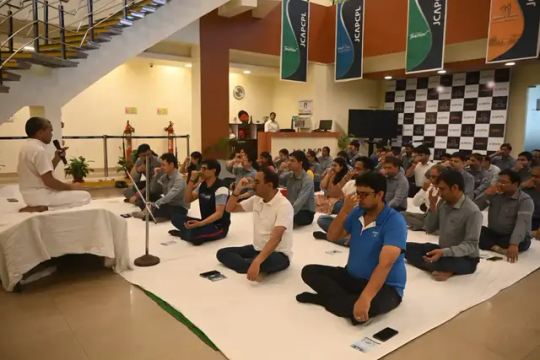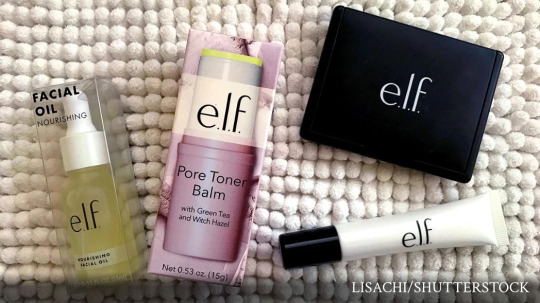#EMPLOYEE WELLNESS PROGRAMS BENEFITS
Explore tagged Tumblr posts
Text
#Corporate Wellness Solutions#Workplace Wellbeing#Employee Wellness#Mental Health at Work#Workplace Wellness#Healthy Workplace#Wellness at Work#Employee Engagement#Work Life Balance#Wellness 2025#Corporate Wellness Programs#Workplace Health#Employee Benefits 2025#Workplace Productivity#Remote Work Wellness#Stress Management#Workplace Fitness#Healthy Work Environment#Wellness Technology#Workplace Burnout#Corporate Wellness Programmes#Workplace Wellbeing UK#Employee Wellness UK#Mental Health at Work UK#Workplace Wellness UK#Healthy Workplace UK#Wellness at Work UK#Employee Engagement UK#Work Life Balance UK#Wellness 2025 UK
0 notes
Text
Let’s Talk German Job Perks That’ll Make You Want to Pack Your Bags
So, picture this: you’re sipping coffee with a friend who’s all, “I kinda want to move to Germany, but what’s the deal with jobs there?” You lean in, ready to drop some knowledge, because German employers? They’re not just handing out paychecks—they’re rolling out a red carpet of company perks that make you wonder why you’re still stuck somewhere else. Beyond the salary (which, let’s be real,…
#books#company perks#employee benefits#Germany#language support#politics#professional development#relocation assistance#remote work#transportation subsidies#travel#wellness programs#writing
0 notes
Text
The Power of Breath: Unlocking Productivity and Well-being in the Workplace
Introduction: Why Breathwork is Essential in Today’s Workplace In the hustle and bustle of corporate life, stress, anxiety, and burnout have become common struggles. Long working hours, endless emails, and tight deadlines often take a toll on mental clarity, focus, and overall well-being. But what if you could significantly reduce stress, enhance focus, and boost productivity—all with something…
#mindfulness#Best Breathing Techniques for Focus#Boost Workplace Productivity with Mindfulness#Breathwork Benefits for Office Workers#Breathwork for Productivity#Corporate Wellness Programs for Employees#Employee Well-being#How to Reduce Stress in the Workplace#mental-health#Mindful Breathing at Work#productivity#Stress Management Techniques#stress-management#Workplace Wellness
0 notes
Text
Global Corporate Wellness Market Analysis: Trends, Innovations, and 2024 Forecast Study
The Global Corporate Wellness Market: Trends, Growth, and Future Outlook
The global corporate wellness market has been growing steadily over the past few years, driven by an increasing focus on employee well-being and health. As organizations around the world recognize the importance of a healthy workforce, corporate wellness programs have become an integral part of business strategies. This article provides a comprehensive overview of the global corporate wellness market, analyzing its current status, future trends, and growth drivers.
Market Overview
The Global Corporate Wellness Market is expected to reach a value of USD 58.4 billion in 2023, with projections indicating it will grow to USD 88.1 billion by 2032. This represents a Compound Annual Growth Rate (CAGR) of 4.7% from 2023 to 2032. As businesses face increasing pressures to improve productivity, reduce healthcare costs, and foster a positive work environment, corporate wellness programs have become crucial tools in achieving these goals.
Corporate wellness programs typically include health promotion measures that support employee well-being. These initiatives focus on improving physical health, mental well-being, and overall lifestyle choices within the workplace. The core aim is to create a culture of health and wellness, which not only improves employee satisfaction but also boosts organizational performance.
Get a Free Sample Copy@ https://dimensionmarketresearch.com/report/corporate-wellness-market/request-sample/
Key Drivers of Market Growth
Regional Analysis
North America: The Leading Market
North America is the dominant region in the global corporate wellness market, holding a 40.6% share of the revenue. The United States, in particular, leads the charge due to its well-established corporate wellness programs and the growing emphasis on employee well-being. According to a RAND employer survey, around half of US employers have incorporated wellness initiatives into their operations. Larger companies, in particular, tend to offer more sophisticated wellness programs that cater to both the physical and mental health of their employees.
The cultural shift in office environments in North America is also contributing to the increasing demand for wellness programs. As organizations embrace hybrid and remote work models, there is a greater need for flexible wellness programs that cater to diverse work styles and employee needs. This is likely to continue driving the expansion of wellness initiatives in the region.
Purchase this Report@ https://dimensionmarketresearch.com/checkout/corporate-wellness-market/
Asia-Pacific: A Growing Opportunity
The Asia-Pacific region is poised for substantial growth in the corporate wellness market, driven by factors such as an expanding working population and a heightened awareness of health management. Countries like China, India, and Japan are seeing a rise in corporate wellness adoption, as organizations in these regions recognize the importance of employee health.
The aging workforce in Asia-Pacific countries presents a unique market opportunity. As the population in these countries ages, the demand for health and wellness programs aimed at older employees is increasing. Many corporations are investing in healthcare infrastructure to cater to these growing needs, positioning the Asia-Pacific region for significant advancements in corporate wellness over the next decade.
Corporate Wellness Programs: Key Components
Corporate wellness programs are designed to cater to the various aspects of employee health, focusing on both physical and mental well-being. These programs generally include the following key components:
Future Outlook: The Role of Technology in Corporate Wellness
As technology continues to evolve, it is expected to play an even more significant role in the corporate wellness market. Companies are increasingly turning to digital solutions to enhance the reach and effectiveness of their wellness programs. The integration of wearable devices, fitness trackers, and mobile health apps allows employers to provide more personalized health recommendations and track employees' progress in real time.
Furthermore, advancements in artificial intelligence (AI) and machine learning are opening new possibilities for corporate wellness. AI-driven platforms can analyze vast amounts of data to create customized wellness plans for employees, while predictive analytics can help identify potential health risks before they become major issues.
In addition, telemedicine services are gaining popularity as part of wellness programs, allowing employees to access healthcare services remotely. This is particularly beneficial in a hybrid or remote work environment, where employees may not have easy access to in-person healthcare facilities.
FAQs about the Global Corporate Wellness Market
1. What is the global corporate wellness market? The global corporate wellness market refers to the industry focused on providing health and wellness services to employees within a corporate setting. This includes physical health initiatives, mental health support, nutrition guidance, and other wellness-related services designed to improve employee well-being and productivity.
2. How fast is the corporate wellness market growing? The global corporate wellness market is expected to reach a value of USD 58.4 billion in 2023 and is projected to grow to USD 88.1 billion by 2032, at a compound annual growth rate (CAGR) of 4.7%.
3. Which regions are driving growth in the corporate wellness market? North America holds the largest share of the market, while the Asia-Pacific region is experiencing rapid growth due to an expanding working population, increased health awareness, and the aging workforce.
4. What are the benefits of corporate wellness programs for employers? Corporate wellness programs help employers reduce healthcare costs, decrease absenteeism, and boost employee engagement, satisfaction, and retention. They also contribute to a positive organizational culture.
5. How does technology impact the corporate wellness market? Technology plays a crucial role in modern corporate wellness programs. Innovations such as wearable devices, fitness trackers, mobile health apps, and telemedicine services allow employers to provide personalized health solutions and track employee progress effectively.
Conclusion
The global corporate wellness market is poised for significant growth, driven by an increasing recognition of the importance of employee health and well-being. With businesses focusing on improving productivity, reducing healthcare costs, and fostering a positive work culture, corporate wellness programs have become essential tools in achieving these objectives. As technology continues to evolve and workplace health needs diversify, the corporate wellness landscape will continue to evolve, offering new opportunities for growth and innovation.
The integration of wellness programs into corporate settings not only benefits employees but also contributes to the overall success of organizations. By investing in corporate wellness, companies can create a more productive, engaged, and healthier workforce, positioning themselves for long-term success in a competitive global market.
#Corporate Wellness#Employee Health#Workplace Wellness#Business Success#Workplace Culture#Health and Wellbeing#Digital Wellness#Employee Engagement#Corporate Health#Workplace Trends#HR#Employee Benefits#Health Programs#Corporate Wellness Trends
0 notes
Text
Why More Companies Are Supporting Employee Digital Detox Programs
Discover why companies are adopting digital detox programs to reduce burnout, boost productivity, and foster healthier work-life balance for employees.
Check out our related articles: https://unplugwell.com/
#digital detox#Benefits of digital detox for employees#Companies supporting digital detox#Corporate wellness and digital detox#digital balance#Digital Detox Programs#digital wellness#Employee digital detox programs
0 notes
Text
Corporate Wellness: A Key to Thriving Workplaces
In today's fast-paced and demanding work environments, the concept of corporate wellness has become more than just a trend. It is an essential aspect of a thriving workplace, focusing on the well-being of employees both physically and mentally. Companies that embrace corporate wellness programs not only improve employee health but also benefit from increased productivity, higher job satisfaction, and reduced turnover. In this article, we explore the significance of corporate wellness, the benefits it offers, and how businesses can effectively implement wellness initiatives.
What is Corporate Wellness?
Corporate wellness refers to a comprehensive set of initiatives and practices aimed at improving the physical, mental, and emotional well-being of employees within a corporate setting. It goes beyond traditional health insurance or sick leave policies by providing proactive support to help employees lead healthier, more balanced lives. Corporate wellness programs can include fitness challenges, mental health support, nutrition workshops, flexible work hours, ergonomic office setups, and mindfulness practices. The goal is to create an environment where employees feel supported, valued, and equipped to handle the stresses of modern work life.
Why is Corporate Wellness Important?
1. Enhanced Employee Health and Well-being
The primary goal of any corporate wellness program is to improve the health of employees. Regular physical activity, stress management techniques, and proper nutrition all contribute to lower rates of chronic illnesses such as heart disease, diabetes, and high blood pressure. Wellness programs can also address mental health, providing resources to combat anxiety, depression, and burnout. This holistic approach to health helps employees feel better, both physically and mentally, leading to improved overall well-being.
2. Increased Productivity and Performance
Healthier employees are more productive employees. When employees feel good physically and mentally, they are more engaged and focused at work. Corporate wellness programs help reduce absenteeism caused by illness and fatigue, allowing employees to stay at work and perform at their best. A fit and energized workforce is better equipped to meet deadlines, collaborate effectively, and drive innovation. Moreover, healthier employees are less likely to take extended sick leaves, resulting in fewer disruptions to the business.
3. Reduced Healthcare Costs
A well-structured wellness program can help lower healthcare costs for businesses in the long term. By promoting healthier lifestyles and preventing chronic health conditions, companies can reduce the frequency of medical claims and insurance premiums. For example, offering gym memberships, healthy snacks, or access to counseling services can lead to fewer doctor visits, lower health-related absenteeism, and a decrease in costly health conditions. Investing in employee wellness ultimately translates into savings for both employers and employees.
4. Improved Employee Engagement and Retention
Corporate wellness programs play a significant role in employee engagement. When companies prioritize the well-being of their employees, it fosters a sense of loyalty and appreciation. Employees who feel cared for are more likely to stay with the company, reducing turnover rates and the associated costs of recruiting and training new talent. Furthermore, wellness programs contribute to a positive company culture, where employees are encouraged to support one another in their health journeys, building stronger team dynamics.
5. Attraction of Top Talent
In today’s competitive job market, offering corporate wellness programs can set a company apart from others. Job seekers increasingly value work-life balance, mental health support, and wellness benefits when choosing an employer. A company that offers comprehensive wellness programs is seen as more attractive to top talent, giving it a competitive edge in recruiting the best candidates.
Key Components of a Successful Corporate Wellness Program
To maximize the benefits of a wellness program, companies need to implement initiatives that cater to the diverse needs of their employees. Some key components include:
Physical Health Initiatives: These include fitness programs, gym memberships, on-site fitness facilities, walking challenges, or subsidized sports activities. Encouraging regular physical activity can help employees stay fit, reduce stress, and improve energy levels.
Mental Health Support: Offering access to counseling services, stress management workshops, and mindfulness sessions can significantly enhance employees’ emotional well-being. Providing mental health resources and creating an open, stigma-free environment is crucial for addressing issues like anxiety, depression, and burnout.
Flexible Work Arrangements: Flexibility is a critical component of modern wellness programs. Allowing employees to work remotely, adjust their hours, or take mental health days gives them the autonomy to manage their work-life balance and reduces stress.
Healthy Eating and Nutrition: Providing healthy snacks in the office, offering nutrition workshops, and encouraging balanced eating habits can have a positive impact on employees' energy levels and overall health. Companies can also partner with local vendors to offer nutritious meals or discounts at health-focused restaurants.
Ergonomics and Workplace Environment: Creating a comfortable and healthy workspace is essential. Ergonomic office furniture, proper lighting, and a focus on reducing repetitive strain injuries can make a significant difference in employee comfort and productivity.
Employee Recognition and Motivation: Corporate wellness isn’t just about physical health—it’s also about creating an environment where employees feel appreciated. Recognizing achievements, offering rewards for participation in wellness programs, and fostering a culture of support can increase employee morale and engagement.
Implementing a Corporate Wellness Program
To implement a successful wellness program, businesses should start by assessing the needs and preferences of their employees. Surveys or focus groups can help identify the areas of wellness that employees most value. Once the needs are understood, companies can develop tailored programs that reflect their unique culture and resources. It’s important to create a supportive leadership environment, where managers actively promote wellness initiatives and lead by example.
Moreover, companies should set measurable goals and regularly evaluate the effectiveness of their wellness programs. This allows them to make data-driven adjustments, ensuring the program remains relevant and impactful.
Conclusion
Corporate wellness is an investment that yields significant returns in the form of improved employee health, productivity, engagement, and retention. In a world where work-related stress and burnout are all too common, implementing comprehensive wellness programs is an essential step toward creating a healthier, happier, and more productive workforce. By prioritizing the well-being of employees, businesses not only enhance their bottom line but also contribute to a more sustainable, positive workplace culture.
#Corporate wellness programs#Employee wellness initiatives#Workplace wellness#Corporate health benefits#Employee well-being#Workplace health programs#Wellness programs for employees
0 notes
Text
Tata Steel Embraces Wellness on International Yoga Day
Tata Steel Hosts Community Yoga Session at JRD Tata Sports Complex Employees and locals unite for holistic health event led by expert instructor. JAMSHEDPUR – Tata Steel, the steel behemoth, promoted work-life balance through International Yoga Day celebration. Tata Steel marked the International Day of Yoga with an inclusive gathering at the Athletics Tracks, JRD Tata Sports Complex. The event…

View On WordPress
#खेल#community engagement#corporate health programs#Employee Well-being#holistic health#International Yoga Day#Jamshedpur events#JRD Tata Sports Complex#Sports#Tata Steel wellness initiative#work-life balance#Yoga Benefits
0 notes
Text

Employee Health and Wellness Programs | Solh Wellness Transform your workforce with Solh Wellness, a leading provider of employee health and wellness programs. Address work stress, boost productivity, and enhance mental well-being with our holistic approach. Discover the benefits of our organizational wellness program and book your 30-day free pilot today!
#employee wellness program#best employee wellness programs#benefits of wellness programs for employers#employee mental health programs#employee health and wellness programs#Organizational wellness program
0 notes
Video
youtube
Seeking to find the hidden potential of self-funded health insurance solutions? Discover how this model grants employers full control over their healthcare plan, reduces costs significantly, and provides transparency into where healthcare dollars are being spent and wasted. Learn how self-funding empowers businesses to tailor plans to their workforce needs, saving over 12-15% annually. Find out why 100% of Fortune 500 companies and 97% of employers who have tried it have found success with this approach. For more click here
#youtube#employee benefits#insurance#human resources#wellness programs#reducing employee turnover#employee benefits trends#why employee benefits matter#self insured employee benefits#self insurance#employee benefits explained#self funded#self funded insurance#employee benefits and services#employer benefits#group insurance#group benefits#small business employee benefits#employee benefit#risk analysis#self-funded health care#employee benefits for small business
1 note
·
View note
Text
Corporate Mental Health Solutions | Solh Wellness
Enhance workplace well-being with Solh's corporate wellness programs. Elevate employee well-being with our customized corporate employee wellness programs. Learn more at https://www.solhapp.com/corporates.php
#company wellness programs#corporate wellness programs#benefits of corporate wellness programs#corporate employee wellness
0 notes
Note
Tell us about the wellness to fash pipeline tho
Here's a recent piece from the guardian on wellness communities and Qanon, so don't take my word for it.
"Wellness" is not just alternative medicine, it is essentially a theory of the body which posits if something makes you feel better, you are better in some meaningful way. I would argue it one of the most commonly held nonreligious magical beliefs in the modern world.
Wellness as a concept has its genesis in the 1950s with "workplace wellness" programs, a sort of budget alternative to offering employee healthcare benefits. This was an era soaked in itinerant business preachers offering classes on things like "hypnosis at a management level" and "yoga to improve leadership abilities". I am exaggerating for effect, but not by much.
The capitalist medical system regularly abandons people. We've all heard stories of profit driven pharmaceudical companies holding the ill hostage for extreme markup on life-saving medicines. People have real, legitimate, reasons to mistrust medical professionals.
Let's say you have chronic pain, and everything your doctor offers you is either ineffective, expensive, or addictive. You are desperate for literally any release, so you start looking into other solutions. You will find an OCEAN of snake-oil salesmen willing to sell you "the secrets doctors don't want you to know."
What is frustrating, is that pain is actually partially psychological. Some wellness techniques may have an actual, medical, benefit on some patients. The worst thing a conspiracy theorist can have is a point. So now you actually do kinda feel better, and you have a sense of loyalty to the grifter selling you 300$ Sumerian Cock Oil Pills. These people are the core of the wellness industry. They are the examples that everyone else points to and says "Well it worked for them!"
Reactionary thought blooms in environments like this. If the medical industry can't be trusted, what else can't be trusted? At any given time, you are two clicks away from "vaccines cause autism." Three clicks away from "Cavemen were 15 feet tall because they only ate meat." And four clicks away from "The medical industry is controlled by The Jews to drain our wallets and keep us sick." Echoes of Nazi attitudes towards German-Jewish doctors are a common backbeat.
Wellness itself is relatively harmless, (compared to the things it is adjacent to) but it acts as a sort of idealogical airport that exposes the curious to a deluge of potentially radicalizing communities. The longer you spend in communities like this, the higher the chance you'll come across something that meshes perfectly with your own biases.
If y'all wanna learn more about wellness and pseudomedicine grifters, I highly recommend the podcast Maintenance Phase.
10K notes
·
View notes
Text
I think that one of the things I find most frustrating about the tariffs conversation (and I find a lot of it frustrating) is... well, okay, it's two things, which are related:
ONE: MAGA are stealing leftist talking points
TWO: That's not how protectionist tariffs work. (This is probably the more important one.)
So.
ONE: The rhetoric of 'temporary hardship to reach eventual greater collective stability' is something that the left generally says with a little more sincerity, oftentimes with things like taxes for public infrastructure or welfare.
It also generally means that everyone experiences a touch of hardship, but the wealth is reinvested into the economy to boost the collective good; the sincerity is low with centrists, but higher with the far left.
The hardship is also more likely to not be moving money to the wealthy, something that is very much happening here. There are some massive shortfalls in tax income these past few years, some of which have been going on for decades, like the subsidization of the fossil fuel industry or unusually high investment in the military, but a big one recently has been the 2017 tax cuts that Trump introduced for the wealthy in his first term. They are, from articles I've seen, responsible for trillions in lost revenue per year sine their introduction, and while they expire in 2025, Trump and this Republican Congress have made it clear that they intend to extend those tax cuts as long as they can. The tariffs are to cover that gap in the budget, meaning that everyone is paying more in taxes, on goods that are disproportionately consumed by the lower and middle classes, in order to cover the tax breaks that billionaires got.
Very much stealing from the poor to give to the rich! That's what the tariffs are about!
e.g. yes you're paying a few extra dollars in taxes this year, but it's being invested in developing a free and reduced school lunch program; while you won't see any immediate benefits, and you'll be a little strapped for cash for month or two if you're living paycheck to paycheck, but you'll see a huge load off your mind come September. Could also be a few extra dollars for an infrastructure project, which takes ten years to build... but once it's built, your commute is cut in half because of the new bridge, or the electricity is subsidized by some new wind farms, or the landfill has been assessed and built over to be a safe, clean park. This second example about infrastructure is Biden's Inflation Reduction Act, which fed money into infrastructure work and other major projects across the country; in many cases, state Senators, congresspeople, and governors who had voted or campaigned against the IRA would then take credit for the benefits their constituents saw.
TWO: You can't use protectionist tariffs to revive local industry without investing in it. High tariffs can minimize damage to the economy if the industry hasn't already left.
If the factories are still around, and the employees are still there and knowledgeable, and the resources haven't been left to diminish on their own, then you protect them with tariffs in the immediate aftermath of a shift in the status quo. You prevent the 'theft of business' with the tariffs, and since it all just seems to be business as usual domestically, it's a blip in the radar for consumers. A bit more complicated if the domestic market has also been exporting the product, as markets abroad will shift to the cheaper product you are protecting against, but you now have a bit more time to innovate a reason to keep market share.
If the industry has been allowed to diminish, or never really existed in the first place (we can't grow coffee or bananas or avocado or mangos at an industry scale, we do not have the weather for it), then a sudden implementation of protectionist tariffs will pass costs along to the consumer until the industry is up and running again.
You know how you fix that? Subsidize the industry you're trying to revive.
In 1910, there were 144,607 people employed in clothing factories in the US (1910 census, employment). This doesn't include people working in shoe factories (181,010), tanneries (33,553), dressmakers and seamstresses (449,342; presumably separated from the first statistic by not being in a factory), dyers (14,050), sewers and sewing machine operatives (291,209), shoemakers and cobblers not in factories (69,570), and the hundreds of thousands of people in the textiles alone (I'm not doing the math, but it's over a million). So we're looking at several million people in the garment industry in the US, in 1910.
In 2020, the combined category of Textile, Apparel, and Furnishing employment contained a total of 16,510 people.
You cannot bring an industry like that back to the US without heavily, heavily subsidizing it to
A. Keep the costs down to where the public can still buy clothing without making it so the people suddenly in this industry are paid pennies on the hour.
B. Train this new generation of people in an industry that barely exists anymore.
C. Build the infrastructure to support the industry, from cotton gins to sewing factories.
You can't bring back an industry that was in the millions in 1910 when there are less than 20,000 people doing it now, in a population that has more than tripled (92mill in 1910, 331mill in 2020).
I just. You have to feed those tariffs into rebuilding the industry. You can't feed them into tax breaks for the wealthy if your stated goal is to rebuild industry. I know that feeding money to his rich friends is the goal for Trump, but I'm so incredibly frustrated that people don't seem to get the basic functions of protectionist tariff application.
Almost forgot to advertize myself since this was just me venting about current events, inspired by a LegalEagle video, but:
Prompt me on ko-fi! I’m trying to move out of my parents’ house.
#economics#tariffs#united states#politics#history#protectionism (trade)#industry#phoenix talks#phoenix politics
205 notes
·
View notes
Text
Dandelion News - February 1-7
(sorry it’s late, I’ve had pneumonia. between fever and meds, today was the first day in over a week I could even think)
Like these weekly compilations? Tip me at $kaybarr1735 or check out my Dandelion Doodles!
1. These solar streetlights can withstand Category 5 hurricanes

“[The solar-powered streetlights] can identify potential problems before an outage occurs, identify current outages without the need for customer reporting, and allow for remote control of brightness settings. The streetlights are built to remain operational even during widespread power outages.”
2. 15 Democratic state AGs stand by gender-affirming care

“"Federal funding to institutions that provide gender-affirming care continues to be available, irrespective of President Trump’s recent Executive Order," the attorneys general say. […] “Health care decisions should be made by patients, families, and doctors, not by a politician trying to use his power to restrict your freedoms.”
3. India doubles tiger population in a decade

“[India has protected] the big cats from poaching and habitat loss, ensuring they have enough prey, reducing human-wildlife conflict, and increasing living standards for communities near tiger areas.”
4. A North Carolina wildlife crossing will save people. Can it save the last wild red wolves too?

“There are thought to be fewer than 20 red wolves left in the wild[…. S]tate agencies and nonprofit groups [plan to] rebuild a 2.5-mile section of the highway with fencing and a series of culverts, or small underpasses, to allow red wolves – as well as black bears, white-tailed deer and other animals – to pass safely underneath traffic.”
5. Merrimack Valley public transit system will keep bus fares free
“[… C]ollecting fares [used to] cost MeVa about $300,000 a year to maintain fare boxes, pay staffers and afford insurance. Since going fare free in 2022, the report found ridership increased 60% from pre-pandemic levels[….] The program is now funded by state allocated funds, including money from the so called “millionaire’s tax.””
6. Health care is key for youths getting out of prison. A new law helps them get it

“[The new law] requires all states to provide medical and dental screenings to Medicaid- and CHIP-eligible youths 30 days before or immediately after they leave a correctional facility. Youths must continue to receive case management services for 30 days after their release.”
7. World’s smallest otter makes comeback in Nepal after 185 years

“Scientists have for the first time in 185 years confirmed the presence of the Asian small-clawed otter in Nepal[….] The last time the […] the smallest of the world’s 13 known otter species, was recorded by scientists in Nepal was in 1839.”
8. B.C.'s smallest First Nation has big plans for a 'stewardship' economy
“The Kwiakah Centre of Excellence will be the base for a dedicated research station, an experimental kelp farm, the nation’s regenerative forestry operations and its territorial Indigenous guardian, or Forest Keepers, program[…. R]esults will include a 100-year management plan that integrates climate, salmon, kelp, and soil research to protect territorial waters and remaining old growth forests.”
9. Glades County schools deploy 13 new Blue Bird electric school buses

“The students at the Glades County school district will directly benefit from the cleaner, quieter rides, and operational cost savings that electric school buses provide[, as well as] the addition of much-needed air conditioning in the new school buses. Until now, only three buses in the district provided air conditioning[….]”
10. e.l.f. Beauty CEO defends DEI: 'Our diversity is a key competitive advantage'

“The cosmetics company recently held that it would not nix its DEI initiatives[….] "Our mission is to make the best of beauty accessible to every eye, lip and face," [CEO] Amin said. "One of the best ways we know how to live that mission is to have an employee base that reflects the community that we serve."”
January 22-28 news here | (all credit for images and written material can be found at the source linked; I don’t claim credit for anything but curating.)
#hopepunk#good news#nature#hurricane#infrastructure#solar#us politics#healthcare#gender affirming care#india#tiger#conservation#animals#endangered species#red wolf#wolf#public transit#anti capitalism#prison#medicaid#youth#otter#nepal#world news#indigenous#canada#florida#electric vehicles#dei#cosmetics
153 notes
·
View notes
Text
Emotional Support

A/N: Hiii everyone, this is my first kinda work for Warhammer and I’m very excited. This is just a funny intro I came up with in my head with more to come about each legion. Anyway, I hope you enjoy!
Warnings: none

Are you, citizen of our great Imperium, craving a change in career? Or are you otherwise unemployed and seeking stable employment? Well, we here at Imperium of Man Inc. have just the career for you!
After years and years of research, it’s come to the attention of everyone involved that we humans are communal by nature and crave intimate relationships with other humans and have a great need for those deep fulfilling bonds (platonic, romantic, or otherwise). This also rings true for your local Space Marine Chapter. Therefore, we here at Imperium of Man inc. have a bunch of emotionally stunted Space Marines desiring people with whom they can essentially imprint on and we need the serfs to be able to do their jobs…Either way, this gap in the market has prompted us here to roll out the first of many programs designed to keep the Empire’s finest in tip top shape. We’d like to introduce to you, Imperial citizen, our newest career path - Emotional Support Human!
That’s right! Today, you could be one of a select few chosen after a series of tests to be placed with your local space marine chapter to be their Emotional Support Human and help support the Emperor’s Angels in a variety of ways.
Qualifications:
-Passing all Imperial Temperament Tests
-Excellent communication skills (verbal, written, etc)
-Happy, Courteous, Enthusiastic, Attentive and Empathetic
-Meets mobility requirements
-Proficient in the Imperial and High Gothic (High Gothic lessons available after employment)
-Ability to multitask
-Work under pressure and at a fast pace
-Willing to learn and understand complex military terminology and strategies
-Able to cope with sudden changes in elevation and being carried around
-Able to perform deep pressure therapy
-Able to cope with hearing complex trauma and lend support as needed
-Able to wield a basic knife and fire a weapon with decent accuracy (training provided if skills not already acquired)
-The mental fortitude to see eldritch horrors beyond comprehension and not go insane
-Comply with imperial policy
-First aid may be required based on legion policy
Benefits:
-competitive salary
-A clean room to sleep in (may share with other emotional support humans based on legion policy)
-At least three meals a day
-free visits to the legion Apothecary
Being an Emotional Support Human HCs:
- You were basically snatched off the street by Imperial employees with little grace. Let’s be honest here, it’s the Imperium.
- The whole time you’re convinced that they’re about to turn you into a servitor. You’re not stupid, you’ve heard the stories of people being yanked of the streets and going missing all to end up as servitors
- You just hope they lobotomize you quickly.
- To say you’re confused when they just stick you in a random room and congratulate you on being selected as a potential candidate for their newest program is an understatement and you’re even more confused when they tell you that they are about to administer their new test for you.
- Do you have to take a test to become a servitor now? You thought the only requirement was a mostly functioning brain?
- You comply (not that you have much choice with the two armed guards staring you down) and take the test, a little unnerved the whole time as the proctor administers the test, but oh well.
- Next thing you know, you’ve passed and they congratulate you on your new job - a Space Marine Emotional Support Human (SMESH/ESH but smesh is just funnier-)
- Anyway, you have no idea wtf that is, but you’re apparently not becoming a servitor and that’s about enough to get you to do anything.
- Plus, a free room and three meals a day were apart of the benefits package and they had you at that.
- You’re moved into another room with about 20 other people, all of you looking equally as confused.
- An Imperial employee gets up in front of you and congratulates you on being the first batch and trial run of the Imperium’s newest hare brained scheme (your words not theirs) - the Space Marine Emotional Support Human program.
- Your new job? Becoming your local space marine legion’s new in-house therapist/stress toy/state sponsored best friend
- Out of everyone that was tested, 21 people passed, and the lot of you were the 20 selected to be in the program (one person per legion). You think 21 people passing the stupid test is ridiculously low but whatever. (Turns out, being able to tolerate your now line of work takes a pretty optimistic and mentally sturdy person that’s not all that common)
- You’re given your new uniform and basically shunted off to your new forever home and to the people the Imperium would love for you to bond with…what could go wrong?
94 notes
·
View notes
Text
April Fools 2025 Short Story - Ricci Corporation
I pretty much have no idea what I’m doing. I don’t trust me, and you shouldn’t either. This translation is not guaranteed to be accurate, it’s mostly written for myself to follow along with the story.
This spring, I’m changing jobs.
I went for a job interview at a stunning skyscraper that embodied wealth and luxury—it was as if money flowed like water there.
Rio
“Emma.”
Emma
���No way, Rio!? I can’t believe I’m seeing you here… Wait, are you working here now?”
Rio
“Yeah. I heard you were interviewing at this company.”
Rio
“I couldn’t just sit around, so I transferred jobs myself.”
Emma
“For that reason!?”
Rio
“I’ve always dreamed of it. A forbidden office romance with my friend—and future bride—Emma.”
Emma
“That’s not happening, okay?”
Rio
“Ah, I love that cool side of you too!”
Rio
“Don’t worry, Emma. I’ll protect you from the flashy guys.”
Emma
“Flashy guys?”
Rio
“Our CEO—he’s always jingling and jangling with jewelry and being loud. Everyone calls him ‘Jingles’—”
Silvio
“The only one calling me that is you, you damn mutt.”
Rio
“Ouch, ouch, ouch—! Don’t grab my head like that! What if it cracks!?”
Silvio
“Hah. Maybe cracking your skull and sending you to the hospital wouldn’t be such a bad idea?”
(This is the CEO…? I can literally hear bones creaking—is Rio going to be okay?)
Keith
“Quite the lively day today… Wait, is that Emma?”
Emma
“Mr. Keith!? I didn’t expect to see you here too—not just Rio, but you as well.”
Rio
“Wait, you two know each other?”
Emma
“Yeah, I dropped something in town the other day.”
Emma
“While I was searching for it, Mr. Keith came up and helped me.”
(Jade… isn’t that the famous, long-established pharmaceutical company everyone’s heard of? Amazing.)
(…No, more importantly—)
Emma
“Even Mr. Azel is here?”
Rio
“You know him too!?”
Emma
“Yeah, there was a free fortune-telling event at the mall recently.”
Emma
“I was thinking about changing jobs, and when I happened to make eye contact with Mr. Azel, he offered to read my fortune…”
Azel
“That’s when I saw signs of a turning point and recommended joining Ricci Corporation.”
Rio
“Why this company of all places?”
Azel
“Why? That’s a strange question.”
Azel
“This company has a brilliant CEO, generous benefits, and is one of the world’s top-tier white companies…”
Azel
“It wouldn’t be an exaggeration to say this company dominates all logistics and rules the world. Why wouldn’t I recommend it?”
Rio
“…CEO, this was your doing, wasn’t it? You used Emma to lure me into working harder, didn’t you?”
Silvio
“Hah. Sure, as an influencer, you’re useful in lots of ways—but don’t get full of yourself.”
Silvio
“Our freelance consultant has a sharp eye for talent.”
Azel
“Your compliment honors me. I’ll be using your employee referral program, so…”
Azel
“I look forward to receiving the referral fee. Thank you very much.”
Silvio
“That depends on this girl.”
(…Crap. I was so caught off guard by how many people I know here.)
Silvio
“Hey, girl. What can you do for us?”
(It’s here—my chance to highlight my strengths…!)
Emma
“I love talking to people like this.”
Emma
“Meeting many people, connecting, and expanding networks is something I excel at—”
Emma
“With those relationships and bonds, I promise to contribute to this company.”
Rio
“Ahhh, there’s no reason not to hire her! As expected of my Nana—she’s so talented it’s blinding!”
Silvio
“Shut up already. Get back to work.”
Azel
“I’ll give my strongest recommendation as well—since I’ve already made the invoice.”
Silvio
“You just want the referral bonus. Also, you work too damn much.”
Keith
“If things don’t work out here, how about joining my team?”
Keith
“I’m not great with people. But having you around would be a huge help.”
Silvio
“Don’t you go poaching other people’s candidates.”
Silvio
“Tch… Well, whatever. You’re hired.”
Emma
“Is that question all you needed?”
Silvio
“Yeah, that’s enough.”
Silvio
“Someone who can wrangle this pack of oddballs must be a damn skilled beast tamer, huh?”
Silvio
“I’ll work you to the bone—along with that damn dog.”
At that time, I didn’t know—
That at Ricci Corporation, I would actually awaken my true talent…
As a beast tamer.
56 notes
·
View notes
Text
Things Biden and the Democrats did, this week.
January 19-26 2024
The Energy Department announced its pausing all new liquefied natural gas export facilities. This puts a pause on export terminal in Louisiana which would have been the nation's largest to date. The Department will use the pause to study the climate impact of LNG exports. Environmentalists cheer this as a major win they have long pushed for.
The Transportation Department announced 5 billion dollars for new infrastructure projects. The big ticket item is 1 billion dollars to replace the 60 year old Blatnik Bridge between Superior, Wisconsin, and Duluth, Minnesota which has been dangerous failing since 2017. Other projects include $600 million to replace the 1-5 bridge between Vancouver, Washington, and Portland, Oregon, $427 million for the first offshore wind terminal on the West Coast, $372 million to replace the 90 year old Sagamore Bridge that connects Cape Cod to the mainland,$300 million for the Port of New Orleans, and $142 million to fix the I-376 corridor in Pittsburgh.
the White House Task Force on Reproductive Healthcare Access announced new guidance that requires insurance companies must cover contraceptive medications under the Affordable Care Act. The Biden Administration also took actions to make sure contraceptive medications would be covered under Medicare, Medicaid, CHIP, and Federal Employee Health Benefits Program. HHS has launched a program to educate all patients about their rights to emergency abortion medical care under the Emergency Medical Treatment and Labor Act. This week marks 1 year since President Biden signed a Presidential Memorandum seeking to protect medication abortion and all federal agencies have reported on progress implementing it.
A deal between Democrats and Republicans to restore the expand the Child Tax Credit cleared its first step in Congress by being voted out of the House Ways and Means Committee. The Child Tax Credit would affect 16 million kids in the first year and lift 400,000 out of poverty. The Deal also includes an expansion of the Low-Income Housing Tax Credit which will lead to 200,000 new low income rental units being built, and also tax relief to people affected by natural disasters
The Senate Foreign Relations Committee voted for a bill to allow President Biden to seize $5 billion in Russian central bank assets. Biden froze the assets at the beginning of Russia's war against Ukraine, but under this new bill could distribute these funds to Ukraine, Republican Rand Paul was the only vote against.
The Senate passed the "Train More Nurses Act" seeking to address the critical national shortage of nurses. It aims to increase pathways for LPNs to become RNs as well as a review of all nursing programs nationally to see where improvements can be made
3 more Biden Judges were confirmed, bring the total number of Judges appointed by President Biden to 171. For the first time in history the majority of federal judge nominees have not been white men. Biden has also appointed Public Defenders and civil rights attorneys breaking the model of corporate lawyers usually appointed to life time federal judgeships
#good news#thanks Biden#Joe Biden#Democrats#politics#us politics#climate change#abortion#reproductive rights#child tax credit#judges
611 notes
·
View notes